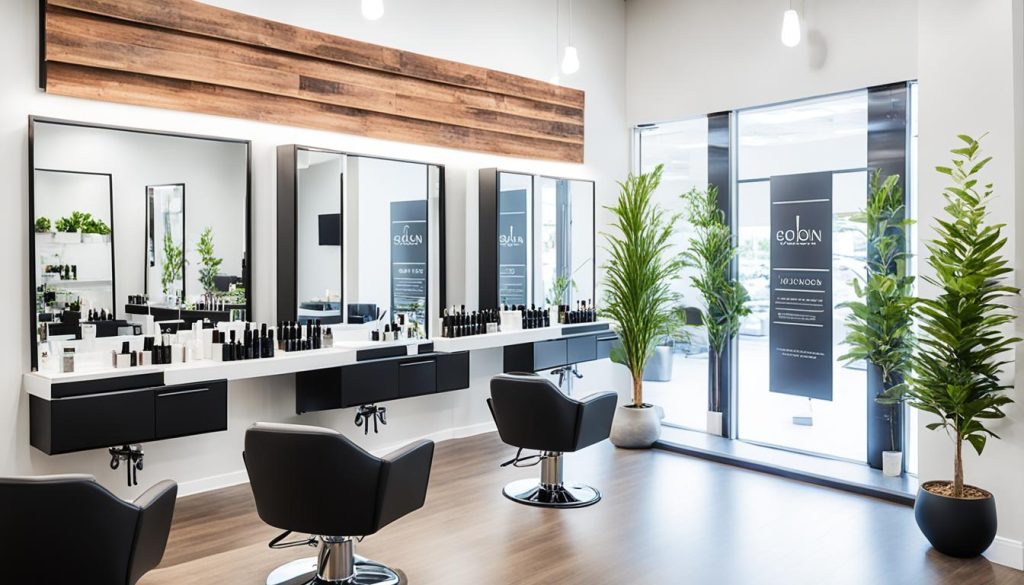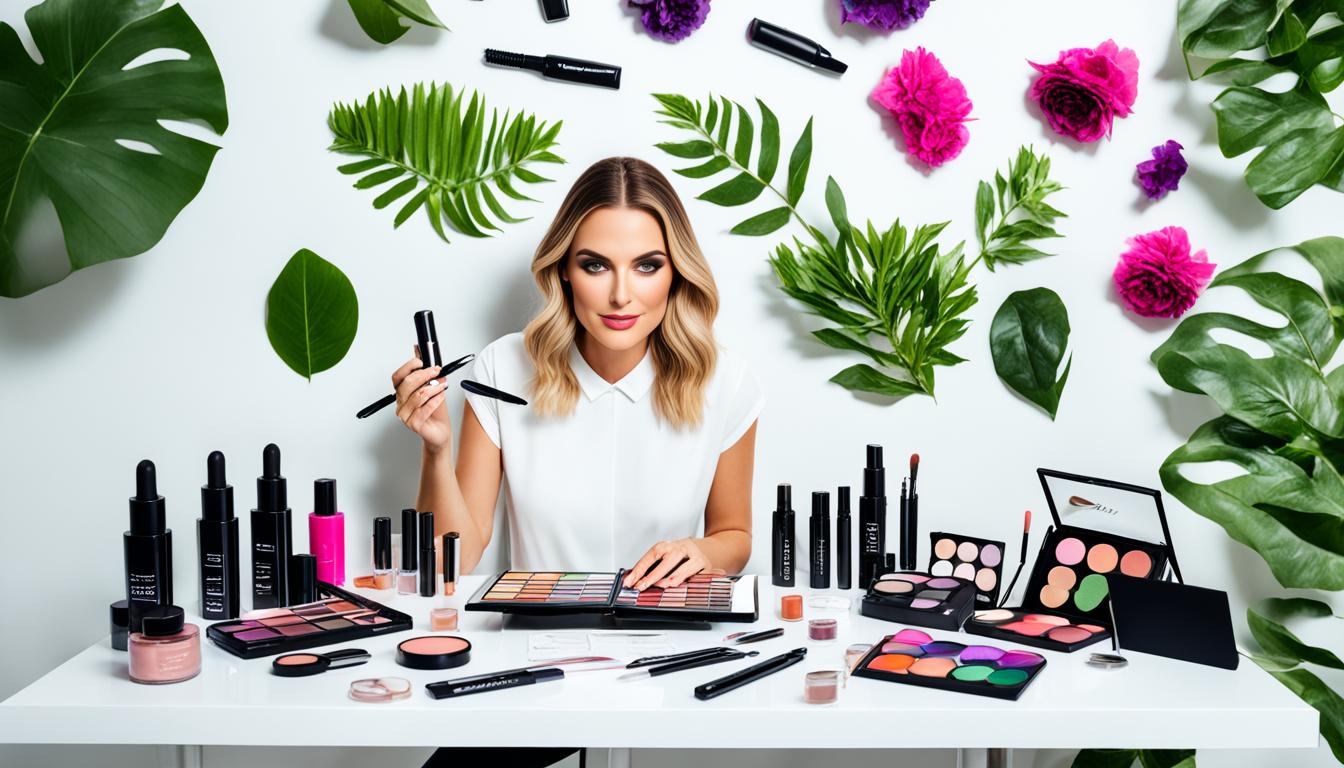If you’ve dreamt of starting your own beauty business, now is the perfect time to turn that dream into a reality. The beauty industry is thriving, with a global cosmetic market valued at over $262 billion and predicted to continue growing. To help you navigate your way through this exciting venture, we’ve put together a simple guide on how to start a beauty business.
Throughout this guide, we’ll delve into each step, providing you with valuable insights and practical tips to set you up for success.
How to Start a Beauty Business?
Research and Define Your Niche
Researching and defining your niche is crucial for the success of your beauty business. By identifying a specific area to focus on, you can tailor your products or services to meet the needs of a particular target audience. This allows you to differentiate yourself from competitors and establish a strong presence in the market.
When deciding on your niche, consider your passions and expertise within the beauty industry. Do you have a particular interest in skincare, cosmetics, or specialized services? By aligning your business with your personal interests and knowledge, you’ll have a stronger foundation for success.
Additionally, it’s important to stay up-to-date with the latest beauty industry trends. Researching current trends can help you identify gaps in the market and uncover new opportunities. By staying ahead of the curve, you can position your business as a trendsetter and attract customers who value innovation.
Defining your target audience is another crucial aspect of niche selection. Understanding the demographics, preferences, and pain points of your target audience will allow you to create products or services that cater to their specific needs. This targeted approach increases your chances of success and helps build a loyal customer base.
Lastly, finding a unique selling proposition (USP) is essential for setting yourself apart from competitors. Your USP is the distinct feature or benefit that makes your business different and compelling. It could be a proprietary ingredient, eco-friendly packaging, or exceptional customer service. Whatever it is, make sure it resonates with your target audience and makes your brand memorable.
To validate your niche, it’s important to gather feedback from your target audience. Conduct surveys, focus groups, or interviews to gain insights into their preferences, needs, and pain points. This feedback will help you refine your offerings and ensure they align with what your target audience truly desires.
By researching and defining your niche, you’ll position your beauty business for success in the competitive beauty industry. Being clear on your niche allows you to better target customers, differentiate yourself from competitors, and create products or services that truly meet market demand.

Decide on a Business Model and Concept
Choosing the right business model and concept is crucial for your beauty business. It will determine the direction and structure of your operations, as well as the services or products you offer. Consider the following options when deciding on the most suitable model and concept for your beauty business:
1. Service Business Model
A service business model is centered around providing beauty services to customers. This approach is commonly adopted by salons, spas, and wellness centers. The key to success in this model lies in offering a diverse range of services, such as hairstyling, skincare treatments, nail care, and makeup application, to cater to a broad customer base.
2. Product Business Model
If you have a passion for developing and selling beauty products, a product business model might be the right choice for you. This involves creating your own line of cosmetics, skincare products, or haircare items. With this model, you’ll need to invest in product development, manufacturing, branding, and marketing to showcase your unique offering to consumers.
3. Mobile Services
Mobile services have gained popularity in recent years, offering convenience and flexibility to customers. With this business model, you can provide beauty services on the go, directly to clients’ homes, offices, or special events. This approach eliminates the need for a physical storefront and allows for personalized, one-on-one experiences.
4. Brand and Product Development
If you have a creative flair and a knack for product innovation, consider focusing on brand and product development. This involves working with manufacturers to create your own line of beauty products for retail or wholesale distribution. Collaborating with beauty influencers or celebrities can help boost brand visibility and increase sales.
5. Dropshipping Beauty Supplies
Dropshipping is a business model where you partner with a supplier who handles inventory management and shipping. As a beauty business owner, you can curate a selection of top-quality beauty products and showcase them on your online store. When a customer places an order, the supplier ships the product directly to them. This model eliminates the need for product storage and allows you to focus on marketing and customer service.
6. Opening a Retail Store
For those looking for a more traditional approach, opening a retail store can be a viable option. This allows you to create a physical space where customers can browse and purchase beauty products, receive services, and seek expert advice. Location, store design, and creating a unique shopping experience are essential factors for success in this business model.
When deciding on your beauty business model and concept, consider your interests, skills, target market, and current industry trends. Research successful beauty businesses in your chosen model to gain insights and inspiration for your own venture. By selecting the right business model, you can build a strong foundation for your beauty business and attract customers with your unique offerings and exceptional services.

Decide on a Manufacturing Strategy (If Applicable)
If you plan to manufacture your own beauty supplies, it’s important to have a strategy in place. Manufacturing your products gives you control over the quality, ingredients, and packaging, allowing you to create a unique brand identity. Here are some key considerations for developing an effective manufacturing strategy:
Familiarize yourself with regulations and compliance requirements
Before embarking on manufacturing, it’s essential to familiarize yourself with the regulations and compliance requirements specific to the beauty industry. This includes understanding product safety standards, labeling regulations, and any specific guidelines related to manufacturing beauty supplies. Ensuring compliance with these regulations will help you avoid legal complications and protect your brand reputation.
Invest in research and development to create high-quality products
Research and development (R&D) play a crucial role in creating high-quality beauty supplies that meet the demands of your target market. By investing in R&D, you can develop innovative formulations, identify unique ingredients, and stay ahead of industry trends. Conduct market research and gather customer feedback to inform your R&D efforts and continuously improve your product offerings.
Decide whether to manufacture in-house or outsource production
One important decision when developing your manufacturing strategy is whether to produce your beauty supplies in-house or outsource the production. In-house manufacturing gives you complete control over the production process but requires significant investment in equipment, facilities, and skilled labor. On the other hand, outsourcing can help you focus on core business activities while leveraging specialized manufacturers who already have the necessary expertise and infrastructure.
Establish a reliable supply chain and implement quality control and testing measures
A well-managed supply chain is crucial for successful manufacturing. It involves sourcing raw materials, overseeing production, and managing distribution. Establish partnerships with reliable suppliers who can consistently provide high-quality ingredients. Implement robust quality control and testing measures to ensure that your products meet the highest standards. This will help maintain customer satisfaction and build trust in your brand.

Develop a strong brand identity and appealing packaging
In the beauty industry, where aesthetics matter, developing a strong brand identity and attractive packaging is essential. Ensure that your products align with your brand values and target audience. Invest in professional packaging design that reflects the quality and uniqueness of your beauty supplies. Eye-catching packaging not only grabs attention on store shelves but also helps differentiate your products and create a memorable brand experience.
In conclusion, establishing a successful manufacturing strategy for your beauty business involves understanding and complying with regulations, investing in research and development, making informed decisions about in-house or outsourced production, managing a reliable supply chain, and creating a strong brand identity through appealing packaging. By carefully crafting your manufacturing strategy, you can position your beauty brand for long-term success in the competitive beauty industry.
Create a Business Plan and Legal Considerations
When starting a beauty business, creating a comprehensive business plan is essential. A well-crafted business plan will help you outline your goals, define your target market, and develop effective marketing and sales strategies. It should also include financial projections and a thorough risk analysis. A business plan serves as a roadmap for success and is often required when seeking financing for your beauty business.
Additionally, choosing the right legal structure is crucial for your business. You may opt for a sole proprietorship, partnership, limited liability company (LLC), or corporation, depending on your unique needs. Research and consult with a legal professional to understand the implications of each structure and select the one that suits your beauty business best.
Furthermore, be sure to obtain the necessary licenses and registrations to operate legally. Compliance with local, regional, and national regulations is imperative. Determine if you need specific licenses for services or products, such as a cosmetology license or product registration. Additionally, ensure that your beauty business adheres to data protection regulations, such as the General Data Protection Regulation (GDPR), if you handle customer data.
Lastly, safeguard your beauty business with proper insurance coverage. This can include general liability insurance, professional liability insurance, property insurance, and workers’ compensation insurance, depending on your specific needs. Insurance protects your business from unforeseen circumstances and provides peace of mind, allowing you to focus on growing your business.
Tips to Grow Your Beauty Business
Growing a beauty business requires a combination of creativity, strategic planning, and excellent customer service. Here are some tips to help you expand your beauty business:
- Focus on Customer Experience: Provide exceptional service and create a welcoming environment to retain existing customers and attract new ones.
- Offer a Unique Selling Proposition (USP): Differentiate your business by offering something unique, such as organic products, specialised treatments, or personalized services.
- Utilize Social Media: Use platforms like Instagram, Facebook, and TikTok to showcase your work, engage with customers, and promote your services.
- Collaborate with Influencers: Partnering with beauty influencers can help increase your visibility and attract a larger audience.
- Expand Your Services: Consider adding new services or treatments to cater to a broader range of customers and increase revenue streams.
- Invest in Marketing: Allocate a budget for marketing efforts such as online ads, local promotions, and collaborations with other businesses.
- Collect Customer Feedback: Regularly seek feedback from customers to identify areas for improvement and ensure you’re meeting their needs.
- Network: Attend beauty industry events, trade shows, and networking events to connect with other professionals and potential clients.
By implementing these tips, you can take your beauty business to the next level and achieve sustainable growth.
Conclusion
In conclusion, starting a beauty business is an exciting journey that requires careful planning, creativity, and dedication. By following the steps outlined in this guide, you can lay a strong foundation for your business and increase your chances of success.
From developing a solid business plan to creating a unique brand identity, every decision you make will contribute to the growth and success of your beauty business. Remember to stay informed about industry trends, seek feedback from your customers, and continuously refine your products and services to meet their needs.
With perseverance and a passion for beauty, you can turn your dream of starting a beauty business into a rewarding reality. Embrace the challenges, learn from your experiences, and most importantly, enjoy the journey of building and growing your beauty business.





